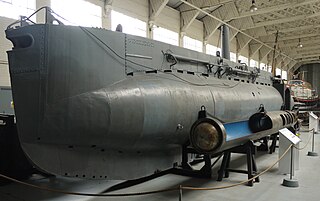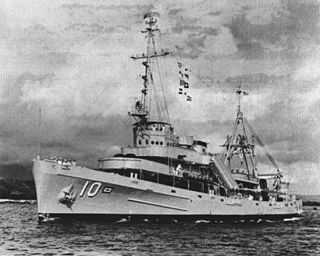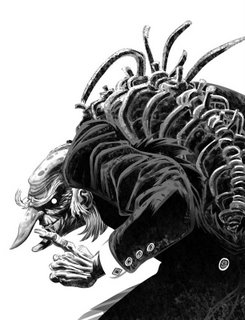This page is based on this
Wikipedia article Text is available under the
CC BY-SA 4.0 license; additional terms may apply.
Images, videos and audio are available under their respective licenses.

A submarine is a watercraft capable of independent operation underwater. It differs from a submersible, which has more limited underwater capability. The term most commonly refers to a large, crewed vessel. It is also sometimes used historically or colloquially to refer to remotely operated vehicles and robots, as well as medium-sized or smaller vessels, such as the midget submarine and the wet sub. The noun submarine evolved as a shortened form of submarine boat; by naval tradition, submarines are usually referred to as "boats" rather than as "ships", regardless of their size.

A ballistic missile submarine is a submarine capable of deploying submarine-launched ballistic missiles (SLBMs) with nuclear warheads. The United States Navy's hull classification symbols for ballistic missile submarines are SSB and SSBN – the SS denotes submarine, the B denotes ballistic missile, and the N denotes that the submarine is nuclear powered. These submarines became a major weapon system in the Cold War because of their nuclear deterrence capability. They can fire missiles thousands of kilometers from their targets, and acoustic quieting makes them difficult to detect, thus making them a survivable deterrent in the event of a first strike and a key element of the mutual assured destruction policy of nuclear deterrence. Their deployment has been dominated by the United States and the Soviet Union / Russia, with smaller numbers in service with France, the United Kingdom, China, and India.

An attack submarine or hunter-killer submarine is a submarine specifically designed for the purpose of attacking and sinking other submarines, surface combatants and merchant vessels. In the Soviet and Russian navies they were and are called "multi-purpose submarines". They are also used to protect friendly surface combatants and missile submarines. Some attack subs are also armed with cruise missiles mounted in vertical launch tubes, increasing the scope of their potential missions to include land targets.

USS Cochino (SS-345), a Balao-class submarine, was the only ship of the United States Navy to be named for the cochino, a triggerfish found in the Atlantic. Her keel was laid down by Electric Boat Company of Groton, Connecticut. She was launched on April 20, 1945 sponsored by Mrs. M.E. Serat, and commissioned on August 25, 1945 with Commander W.A. Stevenson in command.

The three-spined stickleback is a fish native to most inland coastal waters north of 30°N. It has long been a subject of scientific study for many reasons. It shows great morphological variation throughout its range, ideal for questions about evolution and population genetics. Most populations are anadromous and very tolerant of changes in salinity, a subject of interest to physiologists. It displays elaborate breeding behavior and it can be social making it a popular subject of enquiry in fish ethology and behavioral ecology. Its antipredator adaptations, host-parasite interactions, sensory physiology, reproductive physiology, and endocrinology have also been much studied. Facilitating these studies is the fact that the three-spined stickleback is easy to find in nature and easy to keep in aquaria.
A nuclear submarine is a submarine powered by a nuclear reactor. The performance advantages of nuclear submarines over "conventional" submarines are considerable. Nuclear propulsion, being completely independent of air, frees the submarine from the need to surface frequently, as is necessary for conventional submarines. The large amount of power generated by a nuclear reactor allows nuclear submarines to operate at high speed for long periods of time; and the long interval between refuelings grants a range virtually unlimited, making the only limits on voyage times being imposed by such factors as the need to restock food or other consumables.

A midget submarine is any submarine under 150 tons, typically operated by a crew of one or two but sometimes up to 6 or 9, with little or no on-board living accommodation. They normally work with mother ships, from which they are launched and recovered and which provide living accommodation for the crew and support staff.

The Soviet Navy was the naval arm of the Soviet Armed Forces. Often referred to as the Red Fleet, the Soviet Navy was a large part of the Soviet Union's strategic plan in the event of a conflict with opposing super power, the United States, the North Atlantic Treaty Organization (NATO), or another conflict related to the Warsaw Pact of Eastern Europe. The influence of the Soviet Navy played a large role in the Cold War (1945-1991), as the majority of conflicts centered on naval forces.

The XE-class submarines were a series of six midget submarines that were built for the Royal Navy during 1944. They were an improved version of the X class used in the attack on the German battleship Tirpitz.

The X class was a World War II midget submarine class built for the Royal Navy during 1943–44. It was substantially larger than the original Chariot manned torpedo.

USS Jallao (SS-368), a Balao-class submarine, was a ship of the United States Navy named for the jallao, a pearl-white haemulonid food fish of the Gulf of Mexico.

The operculum is a series of bones found in bony fish that serves as a facial support structure and a protective covering for the gills; it is also used for respiration and feeding.

The Stickleback-class submarines were midget submarines of the British Royal Navy initially ordered as improved versions of the older XE-class submarines. They were designed to allow British defences to practice defending against midget submarines since it was theorised that the Soviet Union had or could develop such craft.

USS Greenlet (ASR-10) was a Chanticleer-class submarine rescue ship in the United States Navy.
There have been a number of 21 inch torpedoes in service with the United States. These have been used on ships and submarines of the US Navy. American "21 inch" torpedoes are actually 21 inch (533 mm) in diameter.














